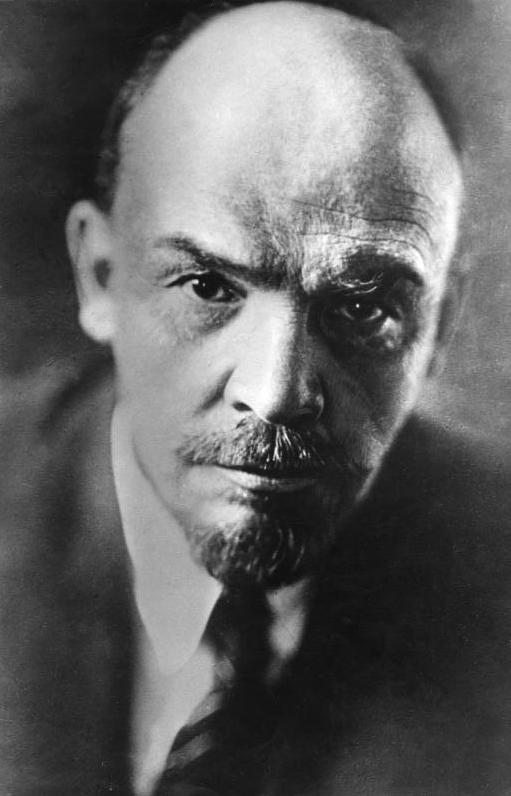Vladimir Lenin was born Vladimir Ilyich Ulyanov on 22 April 1870 in the town of Simbirsk (renamed Ulyanovsk in Lenin’s honour following his death in 1924). The third of six children, Lenin was born into a middle-class family, his father being an inspector of primary schools, a fact Lenin never tried to hide.
In 1887, Vladimir Lenin’s older brother, 21-year-old Alexander Ulyanov, was involved in an attempt to assassinate the tsar, Alexander III, son of Alexander II, for which in May 1887, he was hanged. The event shocked the seventeen-year-old Lenin and certainly radicalized him. As the brother of an executed terrorist, Lenin was kept under police surveillance as he took his place to study law at Kazan University in Tatarstan.
While at university, Lenin became involved in politics and, after one student riot, was arrested. One of the arresting officers asked him ‘Why are you rebelling, young man? After all, there is a wall in front of you,’ to which Lenin replied, ‘The wall is tottering, you only have to push it for it to fall over.’
Lenin the Lawyer
 Expelled from Kazan University, Lenin continued his studies independently before being allowed to finish his law degree in 1892 at the University of St Petersburg, obtaining a First Class degree and learning to speak Latin and Ancient Greek.
Expelled from Kazan University, Lenin continued his studies independently before being allowed to finish his law degree in 1892 at the University of St Petersburg, obtaining a First Class degree and learning to speak Latin and Ancient Greek.
For eighteen months, between 1891 and 1893, Lenin worked as a lawyer defending petty thieves, cases he invariably lost. His only success in the courts came sixteen years later when he successfully sued a French nobleman for knocking him off a bicycle near Paris in 1909.
Moving to St Petersburg in 1893, Lenin became increasingly involved with revolutionary activity and there, two years later, formed a group, the League of the Struggle for the Emancipation of the Working Class. In 1895, Lenin was arrested and imprisoned for fourteen months in solitary confinement.
In 1897, he was exiled to eastern Siberia where he took the alias Lenin, reputably influenced by the Siberian river, River Lena. While in exile, in July 1898, he married fellow revolutionary, Nadezhda Krupskaya. They may have been Marxists and committed atheists but, on the insistence of Krupskaya’s mother, the pair married according to the Orthodox faith.
What Is To Be Done?
Following his exile, Lenin wrote his influential What Is To Be Done? and was instrumental in splitting the Russian Social Democratic Labour Party between the Bolsheviks and the Mensheviks. Lenin and his wife lived in Munich, London, and Geneva before returning to Russia in November 1905, towards the end of the 1905 Russian Revolution.
Two years later, Lenin returned to exile and would not step on Russian soil again until almost a decade later in April 1917. Much of this time was spent in Switzerland where, as well as writing and guiding the direction of the revolution from afar, he found time to indulge his many hobbies. Lenin and Krupskaya became ardent hill walkers of the Swiss Alps and Lenin enjoyed swimming, cycling, music, skating and chess.
Lenin also enjoyed music. In a conversation with Russian writer, Maxim Gorky, Lenin professed to enjoy Beethoven’s Piano Sonata No. 23, the Appassionata, saying he ‘could listen to it every day… But I can’t listen to music very often, it affects my nerves. I want to say sweet, silly things, and pat the little heads of people who, living in a filthy hell, can create such beauty. These days, one can’t pat anyone on the head; they might bite your hand off. Hence, you have to beat people’s little heads, beat mercilessly. Hmm — what a devilishly difficult job I have!’
Mr and Mrs Lenin
 At the age of sixteen, she joined an anarchist group based in Kiev, was given the name Fanny Kaplan, sometimes Dora Kaplan, and charged with assassinating the city’s governor. But the bomb she was preparing detonated in her room, almost blinding her. She was arrested and, had she not been so young (she was still under twenty-one), she would have faced the death penalty. Instead, she was sentenced to ‘eternal penal servitude’ in Siberia. During her time of forced
At the age of sixteen, she joined an anarchist group based in Kiev, was given the name Fanny Kaplan, sometimes Dora Kaplan, and charged with assassinating the city’s governor. But the bomb she was preparing detonated in her room, almost blinding her. She was arrested and, had she not been so young (she was still under twenty-one), she would have faced the death penalty. Instead, she was sentenced to ‘eternal penal servitude’ in Siberia. During her time of forced 